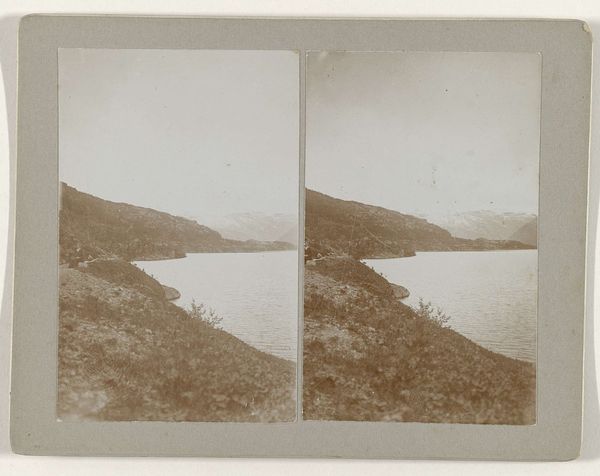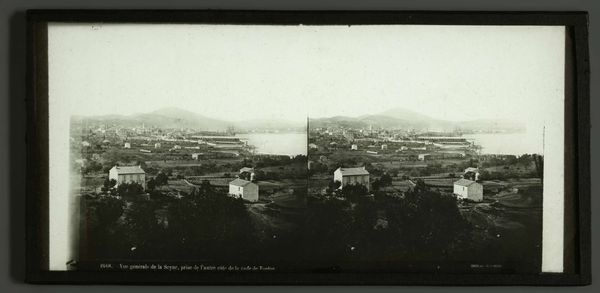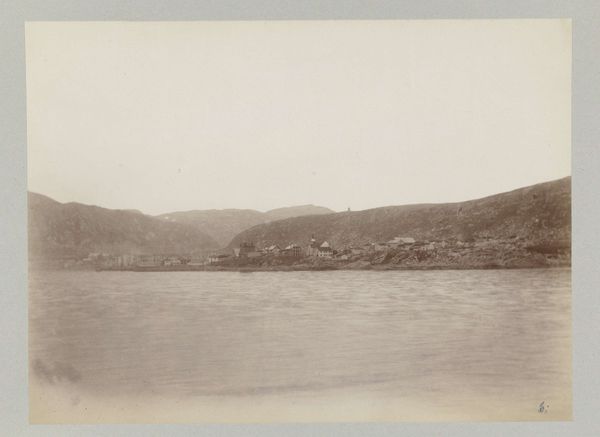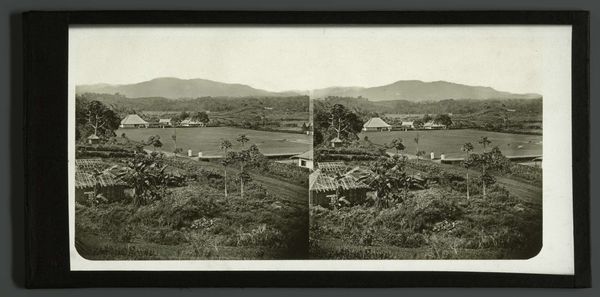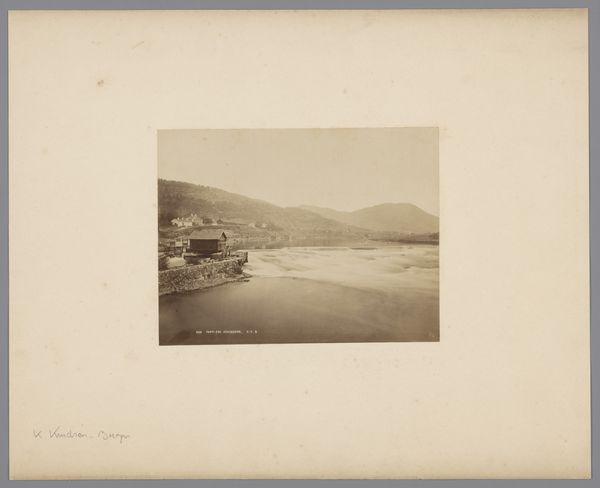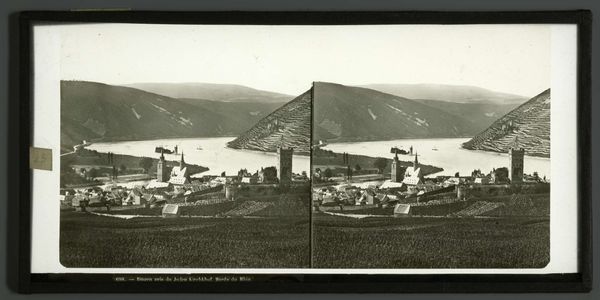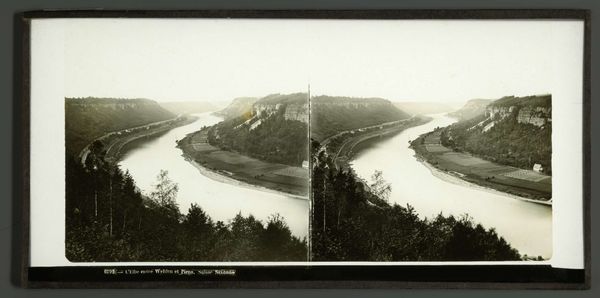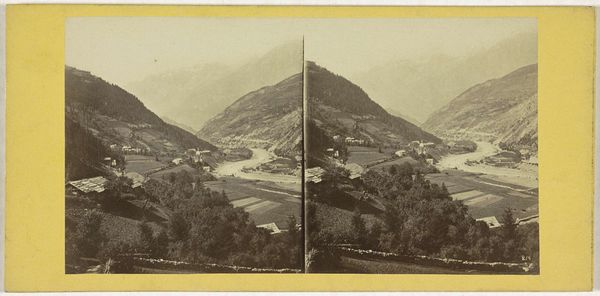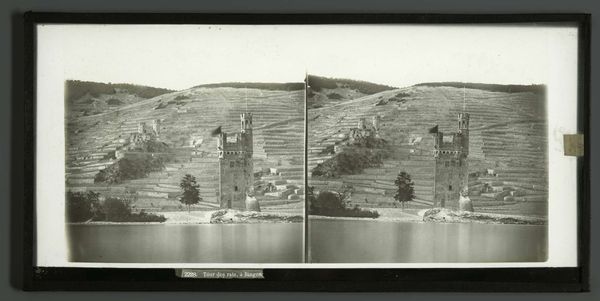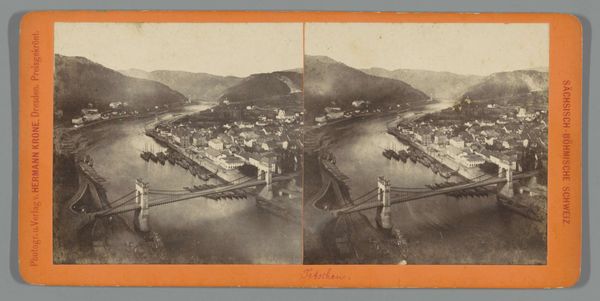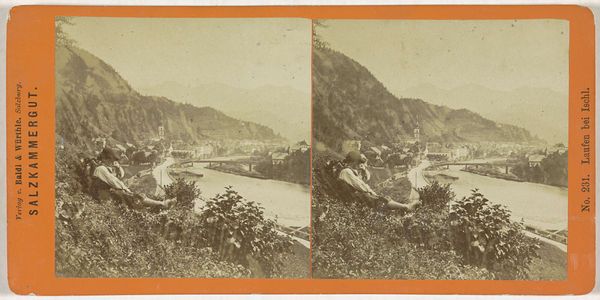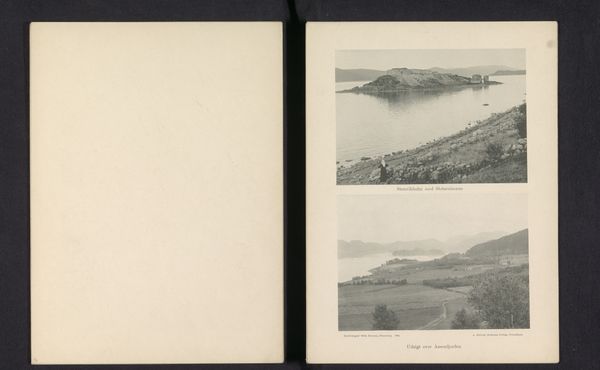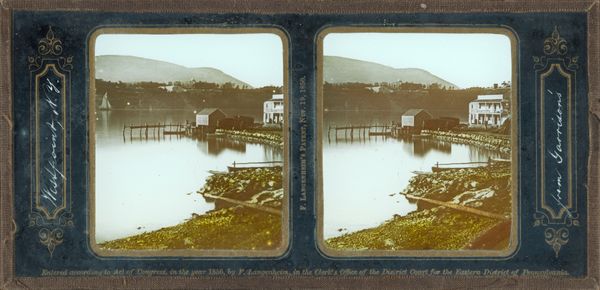
Dimensions: height 85 mm, width 170 mm
Copyright: Rijks Museum: Open Domain
Editor: Here we have “Slot Stolzenfels vanaf de oever van de Lahn,” a photograph captured between 1860 and 1890 by Ferrier Pére-Fils et Soulier, using the gelatin silver print method. I'm struck by the romanticism, how the imposing castle in the distance seems to watch over the river and the daily lives of those traveling on it. What do you see in this piece? Curator: I see a constructed landscape steeped in power dynamics. The romanticism you note isn’t simply aesthetic; it’s deeply entwined with the socio-political narrative of 19th-century Europe. Photography at this time often served to legitimize power structures by creating idealized images of the land owned by those in positions of authority. Consider, for instance, how the castle dominates the composition. Does that feel like a neutral aesthetic choice? Editor: No, it does feel like its placement signifies its importance and dominance. The river and the boats seem almost secondary, like they’re just there to highlight the castle’s grandeur. Curator: Exactly. Think about who controlled the waterways, who profited from trade, and who resided in the castle. The “natural” scene isn't really natural at all but rather an intentional ordering of space that reflects a specific ideology, maybe even colonialism. The lack of people might signal that those who labored or lived in poverty in this area were purposely left out of this ideal representation. Why do you think this might be the case? Editor: To maintain an illusion of control, of uninhabited ownership. Curator: Precisely. It urges us to investigate what realities are intentionally obscured. It pushes me to look at how visual narratives historically shaped cultural and political perceptions, and how those representations affect our world today. Editor: This has definitely changed my perspective; I initially saw romantic beauty, but now I see a statement about power and control, who is depicted and for what reason. Curator: And questioning those representations is precisely where understanding – and transformation – begins.
Comments
No comments
Be the first to comment and join the conversation on the ultimate creative platform.

